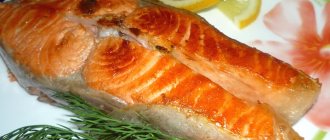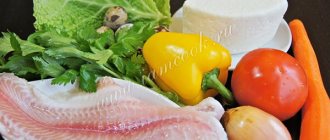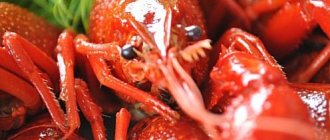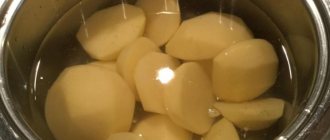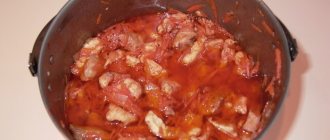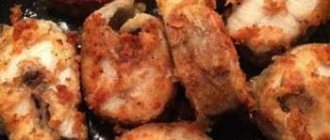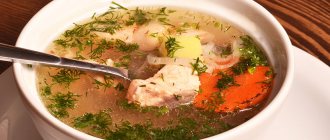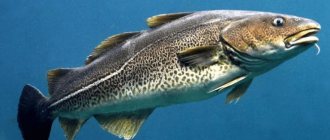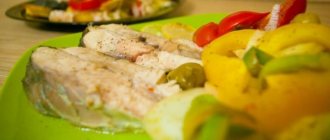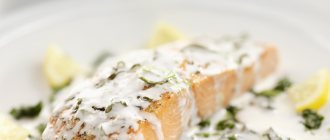How to clean fish correctly
In order to properly cut the fish, it must first be cleaned.
In order to properly clean the fish, you need to take a deep dish. Pour water into it so that the fish hides in it, and there is 8-10 cm left to the edges, this will prevent the water from splashing when you clean the fish. Or use a sink and plug the drain hole.
Water will prevent the scales from scattering in different directions, and will free you from unnecessary cleaning in the kitchen. You can clean it with a knife, holding the fish by the head or body, and removing the scales in the direction from the tail to the head,
but it is better to use a fish scaler rather than a knife.
When cleaning fish that have sharp spines in their fins, it is advisable to cut them off to avoid getting pricked.
It is most convenient to cut with scissors, preferably kitchen scissors. Once cleaned, you need to free the dishes from scales and wash them.
Gutting red salmon fish
To gut red salmon fish - salmon, pink salmon, trout, salmon, chum salmon - you can choose one of several methods. But here our ultimate cutting goal will be to obtain a semi-finished product from red fish in the form of fillets without skin or steaks with skin.
Therefore, during the cutting process, we gut the salmon in the following way: using a knife blade from the anus to the head of the salmon, we make a cut (photo 2), remove the entrails from the abdominal cavity of the fish (photo 3), trying not to damage the gallbladder of the belly of the red fish during gutting.
The next step, which after gutting when cutting red fish into fillets without skin is not mandatory, is to wash the cut salmon carcass. Or you can rinse already prepared steaks or layers of salmon fillets.
How to properly cut fish
Next, the fish must be gutted. There are two ways to do this.
- The first is when the fish is cut from the gills to the anal fin.
The insides are taken out; if there is caviar, it is separated from the intestines and placed in a separate cup. In the future, you can also fry it or throw it into your ear. The liver of pike and burbot is prized and is also left behind.
Then, for small fish, you can cut off the head and throw it away, this is optional. Since then they throw it away anyway. Although if you have a cat at home or leave a cat for them, they will happily eat fried or boiled fish.
After gutting large fish, you need to cut them into pieces of about 5 cm, separating the head and tail. The head, if you wash the gills well, can be fried and eaten, or boiled fish soup, there is enough tasty meat there. The tail can also be used to fill the ear. The resulting pieces are cut along the ridge into two halves so that the meat is better fried or cooked.
There is another way to properly cut fish:
- The second method, when the fish is cut from the back, again the head, can be left or cut off, as desired. If the head remains, then the fish is taken by the back, placed on a hard object, belly down.
The base of the skull is pierced with the edge of a hard knife, with the blade towards the mouth. Then, with force, the head is cut into two halves.
Having cut the head, the fish is placed on its side with its back to itself, and cut along the ribs along the ridge, pressing it to the table with your free hand,
cutting to the base of the tail. After cutting, the fish is opened, the entrails are taken out, and thrown away, leaving the caviar, and if it is pike or burbot, also the liver.
In this form, large fish can be stewed in the oven with vegetables, or salted for drying and smoking.
What to cook?
Carp fillet makes surprisingly juicy and tender cutlets. The recipe is so simple that it is suitable even for inexperienced housewives. Required ingredients:
- fish fillet (500–600 grams);
- loaf (several pieces);
- one onion;
- milk (150 ml);
- breadcrumbs:
- vegetable oil;
- salt, pepper, spices to taste;
- greenery;
- one egg.
Soak the loaf in milk. Peel the onion and chop finely, then fry it in vegetable oil. We pass the carp fillet through a meat grinder and add bread to it (squeeze out the milk) and cooled onion. Salt and pepper the minced meat. Add the egg and finely chopped herbs. Mix everything and make small cutlets. Roll in breadcrumbs (or semolina) and place in a hot frying pan. Fry the cutlets on both sides until golden brown. Serve hot with mashed potatoes, rice or boiled pasta. Bon appetit!
Filling salmon
The beginning of filleting salmon is demonstrated in photographs 1-4 above in the text.
The ultimate goal of cutting will be to obtain skinless fillets from a whole carcass of red salmon fish. For this:
Place the cleaned and gutted salmon on a cutting board and cut off the tail. We insert a knife with a thin blade under the ventral fin and separate the head from the salmon (photo 1).
In the next step of filleting red fish, from the wide part of the carcass to the tail, we cut off a layer of salmon fillet along with the rib bones above the vertebral bone.
Cut out the spine along the entire length of the lower layer of salmon fillet. To avoid causing wounds, hold the spinal bone with a paper napkin (photo 2).
At the penultimate stage of cutting, we cut off the rib bones from each plate of salmon fillet (photo 3). Starting from the tail, cut the flesh of the red salmon fish away from the skin with a thin knife. Although, if you wish, you can pull out the rib bones from salmon fish with tweezers.
As a result of cutting the salmon, we got two layers of fillet without skin and bones.
We just have to figure out how to gut the red fish through the gills in order to further prepare salmon in any form, including stuffed whole.
Washing red fish
To rinse red fish, it is advisable to use a stream of running water (photo 4). Or you can rinse the salmon in a bowl of water, changing the water several times.
After washing, for convenience during further cutting, it is advisable to blot the red fish with paper towels. Then the salmon will not slip between your fingers during subsequent processing.
We either cut the washed, slightly dried salmon carcass into portions - steaks, or fillet the red fish in one of several ways. First, let's find out how best to cut salmon into steaks for making fried fish.
Why do you need to gut fish?
Below we will talk about common but not obvious things. In some cases, this can be shocking, after which you will never want to see raw fish on your table. I mean national Japanese cuisine, which uses raw fish and crab meat, as well as the cuisine of northern peoples (stroganina - frozen fish, eaten fresh).
This problem appears most clearly in the industry of salting and smoking products.
Today, the main smoking products are meat, fish and (much less) cheeses. In most cases, these products are sold as is, uncut. This happens because it is not profitable for manufacturers of large quantities of goods to engage in either high-quality processing or, often, packaging of goods.
Take, for example, smoked pork ribs or chicken legs. Naturally, they are sold along with bones. Due to insufficient heat treatment before smoking, blood can be observed inside the meat. Failure to comply with production technology leads to a reduction in shelf life and poisoning among consumers.
As for fish, smoked fish often arrives in store windows uncut. If the head and entrails are removed, it will lose significant weight. The price will only increase.
Let's take the most common fresh-frozen fish - blue whiting. Defrost, cut into pieces, put in a glass container, fill with water. Place in a 1500 W microwave oven for 15 minutes.
In the photos presented you can see white threads twisted in spirals - these are helminths. That is, parasites that live in the insides of fish. A cache of these worms can be preserved in boiling water.
Any fish can be infected with helminths and other types of parasites to a greater or lesser extent. Experts argue where there are more of them - in sea fish or in river fish. In fact, the intensity of infection depends on various conditions. They are mainly found in the intestines, but adult parasites can penetrate other tissues of the fish.
For those who feed fish to their pets, we recommend cooking it in the microwave as described above. The peculiarity of this preparation is that it involves a mixed thermal-electromagnetic processing of the product, in which up to 98% of all living organisms existing on Earth die. That is, your pet will be safe and will not become a carrier of harmful organisms.
We cannot control the production of smoked fish in large industrial enterprises. But usually such enterprises are equipped with appropriate laboratories.
To protect yourself, your family, and your pets, we recommend that you carefully approach the purchase of fresh meat and fresh fish. There is no need to buy fish from random people on the highways. If possible, it is better to prepare food yourself, actively using the advantages of microwave ovens and pressure cookers.
Tags: product quality, contamination, danger, fish, parasites, food

